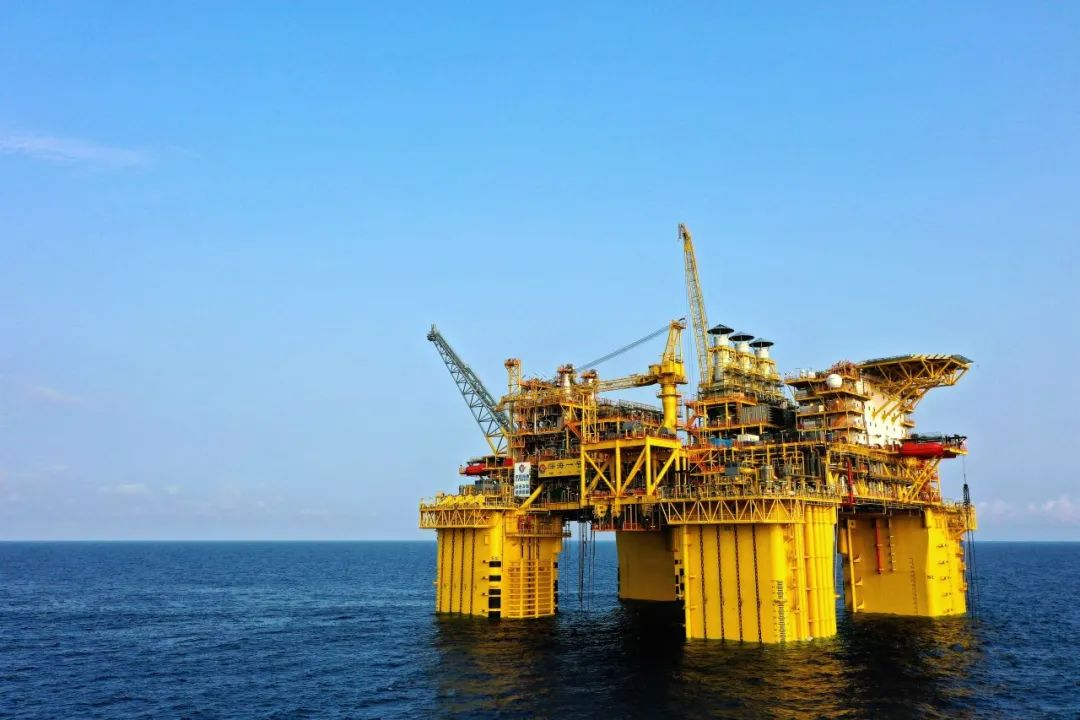On June 24th, at the National Science and Technology Award Conference, the Key Technology and Application of Development Engineering for Deep Sea No 1 gas field was awarded the First Prize of National Scientific and Technological Progress for the year of 2023 in the Great Hall of the People in Beijing. This project, for which CNOOC is responsible for the EPC, is the only first prize for national scientific and technological progress in the field of energy and chemical industry and offshore engineering this year.

As China’s first self-operated ultra-deepwater gas field, Deep Sea No. 1 was discovered in 2014, with proven geological reserves of more than 100 billion cubic meters of natural gas and a maximum operating water depth of more than 1,500 meters, and was officially put into operation on June 25, 2021, with a cumulative production of more than 8 billion cubic meters of natural gas.
The gas field, with proven geological reserves of natural gas exceeding hundreds of bcm, will play an integral part in the nation’s efforts to achieve carbon neutrality by 2060, it said.
While the gas field, which is located 150 kilometers from South China’s Hainan island, is an important source of clean energy for the Hainan Free Trade Port and the Guangdong-Hong Kong-Macao Greater Bay Area, it has also been the most difficult to exploit.
Closely following the changes in upstream and downstream production of gas fields, the operations team has overcome a series of obstacles, and ensured safety amid strong deep-sea currents and self-debugging of the ethylene glycol recycling system, said Pei Jianxiang, manager of the Department of Exploration and Exploitation of the Hainan branch of CNOOC.
Deep water is a term that refers to ocean areas more than 300 meters below sea level; areas more than 1,500 meters below the sea level go by the term ultra-deep water.
According to CNOOC, the difficulty in laying undersea pipelines, a vital part of offshore oil and gas production systems, increases as depths deepen, while seabed movement, geography, pressure and temperature also pose engineering challenges.

According to CNOOC technical experts, the project has created a new model for the economic development of ultra-deepwater gas fields under extremely harsh sea conditions. The project has cracked the key technical problems such as construction and assembly of ultra-large tonnage structures, long-term safe service of dynamic pipes and cables, and safe and efficient drilling.
It is worth mentioning that the project of “Deep Sea No 1” has been awarded the Seventh China Grand Awards for Industry, the Special Prize of Hainan Provincial Science and Technology Progress Award twice, and the Special Prize of Scientific and Technological Progress of Offshore Petroleum Industry twice.
It has formed more than 60 invention patents, 80 papers and 70 standards, contributed to the localization of more than 10 key complete sets of equipment, and effectively led the development of domestic deepwater oil and gas equipment industry chain. Its technical achievements have been successfully promoted to a number of major projects such as “Sea Anemone No. 1” and “Haiyou Guanlan”, which are expected to pry the economic and efficient independent development of offshore natural gas resources on a larger scale.


